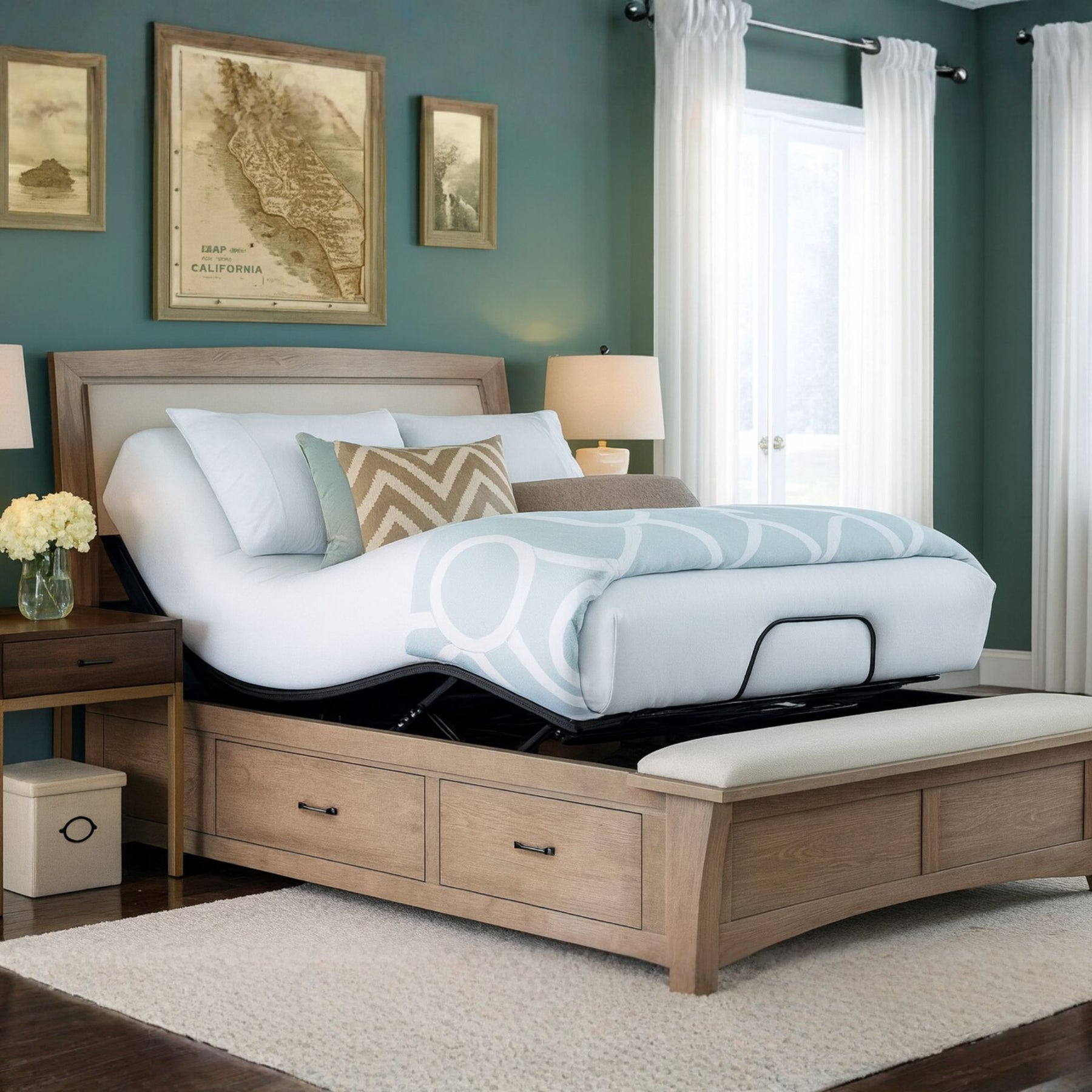The relationship between your sleep environment and the quality of your rest is undeniable.
A cluttered bedroom can be more than just an eyesore; it can actually hinder your ability to sleep well. Sleep hygiene, which includes the various practices and habits that are conducive to sleeping well on a regular basis, is crucial for overall health.
A well-organized and decluttered bedroom contributes to good sleep hygiene by providing an optimal sleep environment that’s cool, breathable, dark, and quiet.
The impact of a decluttered sleeping space extends beyond just appearance. Studies have found that minimizing clutter can lead to a decrease in stress and anxiety, which are often barriers to restful sleep. Bedroom organization involves more than just tidying up; it includes creating systems that make maintenance easier and stress less likely.
The benefits of your bedroom organization are not limited to sleep alone, but extend to waking hours as well, as they can improve one's mental state and productivity. By engaging in the practice of decluttering, you’re likely to find that you not only sleep better but feel better overall.
Reducing bedroom clutter can be approached as a step-by-step process, incorporating habits such as using trays and baskets to contain smaller items and ensuring that each possession has a designated place. This deliberate approach to organization can transform the bedroom into a sanctuary for rest, ultimately leading to improved sleep and well-being.
The Importance of a Decluttered Bedroom
Creating a clutter-free bedroom is crucial for enhancing sleep quality and establishing a serene atmosphere. This section provides practical guidelines and strategies to transform where you sleep into a peaceful space.
Defining a Clutter-Free Sanctuary
A clutter-free sanctuary means having a bedroom environment that promotes relaxation and restfulness. This is achieved by minimizing distractions and keeping only items that contribute to a sense of calm and comfort. For an effective bedroom declutter, starting with a clear plan can ease the process and ensure every item has a designated place.
Impact of Bedroom Environment on Sleep
The condition of your bedroom can significantly influence your sleep hygiene. A cluttered space can increase cortisol levels, the stress hormone, which may lead to disrupted sleep patterns including insomnia. A decluttered, calming environment can contribute to lower anxiety and better sleep quality.
Decluttering Tips and Strategies
When decluttering the bedroom, it's best to approach it with a realistic plan and schedule to avoid overwhelm.
Begin with clothes that no longer fit or provide joy, and consider donating or selling these items. Repeat this process for jewelry, books, and other personal possessions. By doing so, each action not only clears physical space but also promotes a calm mental state.
Maximizing Space for Peace and Tranquility
To maximize the available space for a more peaceful and tranquil bedroom, consider installing bed storage solutions or under-bed storage boxes.
Shelving and well-planned furniture placement can further aid in reducing visual clutter, enhancing a spacious feel.
Organizing Items for a Tidy Look
For a tidy environment, organizing items is key. Use decorative boxes and drawers to keep smaller items contained and out of sight. This approach not only declutters your space but also adds to the overall aesthetic, making the bedroom more welcoming and relaxing.
Prioritizing Items for Keep or Removal
Decisions on what to keep or remove can be challenging.
Prioritize items that you love and use regularly, and those that contribute to a restful sleep environment. For everything else, consider if it’s necessary and whether it fits with the peaceful and calming ambiance you aim to create for optimal rest.
Detailed Decluttering Steps
A bedroom decluttering project improves sleep quality and transforms your room into a serene retreat. It's not just about disposal, but about creating a harmonious space that promotes relaxation.
Creating a Decluttering Schedule and Plan
Establish a realistic plan: Begin by setting aside consistent, manageable time blocks you can dedicate to decluttering. For example, allocate 30-minute sessions each day or a few hours during the weekend, ensuring sustainable progress without overwhelming your schedule.
Addressing Different Areas Step-By-Step
Tackle one area at a time: Combat the clutter by methodically working through different segments of the bedroom – from the bed and nightstands to drawers and under the bed. Starting with the most cluttered section can have a domino effect, motivating you to keep the floors clean and maintain the calm atmosphere.
Sorting and Organizing Personal Items
- Separate items into categories: Clearly distinguish between items to keep, those to donate, and those to discard.
- Assess personal belongings critically: Reduce clutter on the bookshelf and inside drawers, keeping only the essentials and your most cherished items, such as books and jewelry.
Optimizing Storage Solutions
- Utilize multi-functional furniture: Consider a storage bed to maximize space efficiency, enabling you to store seasonal clothing or extra bedding discreetly.
- Incorporate vertical storage: Hang hooks, peg boards, and floating shelves to keep items off the floors and maintain a tidy environment.
Maintaining a Clutter-Free Bedroom
- Develop daily habits: Incorporate simple routines like making the bed every morning. Also, have a dedicated laundry hamper to keep clothes off the floor.






















